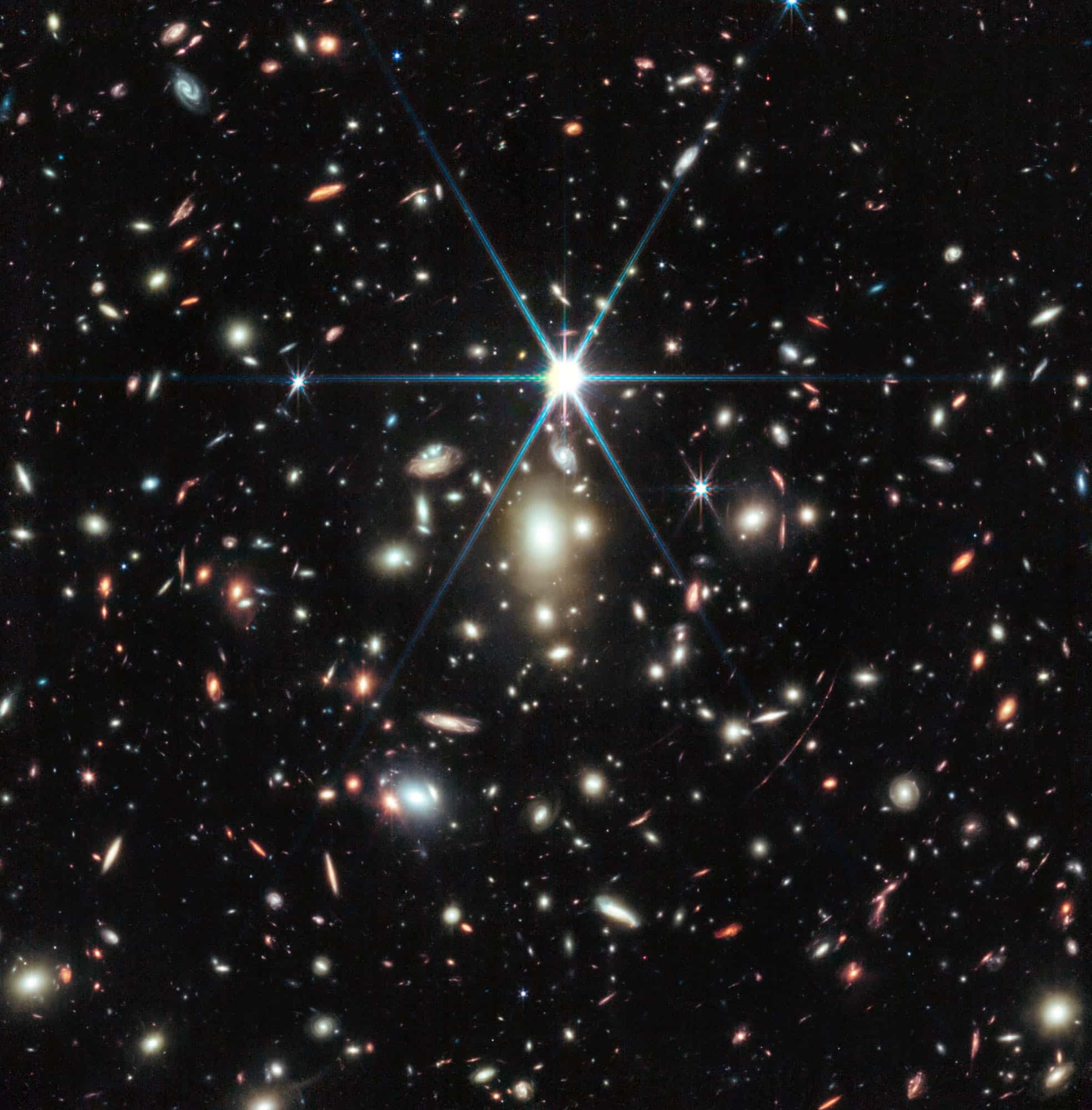Primordial galaxies with the James Webb and ALMA telescopes
Event
First images from the James Webb Spatial Telescope (JWST) show galaxies formed 200 million years after the Big Bang, defying the cosmological model.
Informations pratiques
Location
Grande Salle des séancesDate
-
1. This image shows Earendel, the most distant star ever detected, whose light is distorted by the WHL0137-08 galaxy cluster in the foreground. (Whale constellation.) © NASA, ESA, CSA, D. Coe (STScI/AURA for ESA; Johns Hopkins University), B. Welch (NASA's Goddard Space Flight Center; University of Maryland, College Park). Image processing: Z. Levay.
The first images from the James Webb Spatial Telescope (JWST) have detected hundreds of distant galaxies, and their ages date back to just 200 million years after the Big Bang. This large number of galaxies, already well formed at the dawn of the Universe, comes as a surprise to astronomers, whose simulations had not predicted so many detectable objects. This could call our cosmological model into question. The number of quasars and active nuclei is also much higher than expected, and black holes are growing much faster than predicted in the young Universe. During this conference-debate, all possible solutions to this mystery will be discussed, in combination with images of these galaxies by the ALMA large radio interferometer.
Organized by Françoise Combes, President of the French of Academy of sciences and Daniel Rouan, member of the Académie des sciences.
With the participation of:
Hakim ATEK, teacher-researcher at the Institut d'astrophysique de Paris (CNRS/Sorbonne Université) - Discovery of primordial galaxies with JWST
David ELBAZ , director of research at the Commissariat à l'énergie atomique et aux énergies alternatives (CEA, Saclay), director of the Cosmologie et évolution des galaxies laboratory (CEA/CNRS/Université Paris-Diderot) - Do the galaxies unveiled by Alma and the James Webb question the cosmological model?
Marta VOLONTERI, Director of Research at the Paris Institute of Astrophysics (CNRS/Sorbonne University) - How do giant black holes form at the beginning of the Universe?
Dominique AUBERT, professor at the Strasbourg Astronomical Observatory (CNRS/Université de Strasbourg)- Numerical simulations of galaxy formation
Véronique BUAT, member of the Institut Universitaire de France, professor at the Laboratoire d'Astrophysique de Marseille ( Aix-Marseille Université/CNES/CNRS) - Gas- and dust-rich primordial galaxies